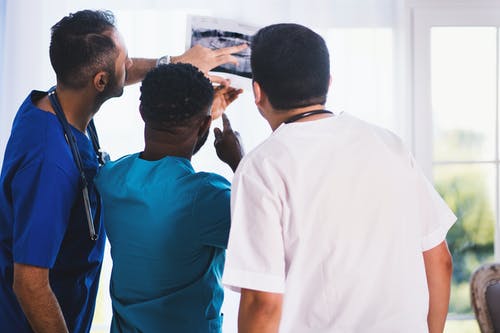Welcome to the fascinating world of radiology, a discipline at the heart of modern medical procedures. Have you ever wondered how doctors look inside your body without making a single incision? The answer is radiology. Let’s delve further into this vital element of healthcare.
What is General Radiology?
General radiology involves imaging techniques such as X-rays, magnetic resonance imaging (MRI), and ultrasound to visualize the body’s internal structures. It is critical in diagnosing and treating various health conditions, including bone fractures, lung diseases, and cardiac ailments. A crucial branch of medicine, you would typically find a radiology department in any healthcare setting, be it a bustling city hospital or a small countryside clinic.
The Role of General Radiology in Diagnosis
Radiology acts as the “eyes” of healthcare, offering a glimpse into the human body that wasn’t possible in the pre-radiology era. Let’s look into how it revolutionized diagnosis.
Importance of General Radiology in Early Diagnosis
General radiology is pivotal in early diagnosis, often the key to successful treatment and healthier outcomes. Let’s break down some reasons why general radiology is vital in early diagnosis:
- Improves Prognosis: Many diseases, like cancer and heart disorders, have a significantly better prognosis when detected early. General radiology provides a means to screen for these conditions, even before symptoms arise, significantly improving survival and recovery rates.
- Non-Invasive Diagnosis: General radiology offers a non-invasive approach to diagnosis. For instance, ultrasound can detect fetal abnormalities early in pregnancy without risk to the mother or fetus. Using radiology for early diagnosis reduces the need for invasive, potentially risky procedures.
- Guides Treatment: Radiological imaging at the onset of disease can help decide the course of treatment. For instance, an MRI scan revealing a mild disc herniation in a patient with back pain could prompt a trial of conservative management before resorting to surgery.
- Disease Monitoring: General radiology is essential in early disease diagnosis and in monitoring disease progression and response to treatment. For instance, tuberculosis patients regularly undergo chest X-rays to assess how well they respond to medication.
- Economic Impact: Early diagnosis often means more effective and less expensive treatment. General radiology thus plays a critical role in medical economics by spending on early detection and treatment, avoiding high costs associated with advanced disease management.
Improving Accuracy of Diagnosis with General Radiology
- Radiological imaging aids in accurate diagnosis by providing high-quality images of body structures, enabling doctors to pinpoint the disease’s location, size, and extent.
- Certain imaging modalities like PET scans, which show how tissues and organs function, offer additional diagnostic information.
Conditions Diagnosable via General Radiology
As broad as the field of healthcare itself, general radiology caters to various medical conditions. Let’s delve into some health issues this practical discipline can help diagnose.
Bone and Joint Conditions
- X-rays are the first line of investigation in detecting bone fractures or degenerative joint diseases like osteoarthritis.
- Advanced imaging techniques like MRI can visualize soft tissues surrounding the bones, such as cartilage and ligaments, helping detect conditions like ligament tears and spinal disc herniation.
Lung and Chest Conditions
- Radiological imaging is essential in diagnosing lung conditions like pneumonia and lung cancer. For instance, chest X-rays, while basic, can provide vital clues for these diseases.
- More advanced modalities like CT and MRI provide detailed imaging, enhancing diagnostic precision for complex chest conditions.
Heart and Blood Vessel Conditions
- Diagnostic imaging, particularly echocardiography and cardiac CT is critical for diagnosing heart conditions such as heart disease and blood clots.
- Moreover, through angiography, radiology can visualize the inside of blood vessels, diagnosing aneurysms and vascular malformations.
Abdominal Conditions
- Diseases like gallstones and kidney stones are readily diagnosed using ultrasound and CT imaging.
- Radiological imaging is also pivotal in diagnosing hernias, appendicitis, and various conditions in the digestive system.
Future of Diagnosis with General Radiology
As we look ahead, there’s no doubt that radiology advancements will continue redefining the frontiers of medical diagnosis. Let’s explore some emerging trends and their impact on future diagnostics.
Emerging Trends in General Radiology
- Artificial intelligence (AI) has found its way into radiology, automating interpreting images, minimizing human errors, and speeding up diagnosis.
- 3D printing technology, in conjunction with radiological imaging, is creating lifelike models of body structures, aiding in pre-operative planning and medical education.
The Role of AI and Machine Learning in General Radiology
- Machine learning algorithms are being developed to assist radiologists in image interpretation. For instance, algorithms are used in recognizing patterns that may signify diseases such as breast cancer, much like the disease detection power of Austin radiology capabilities.
- AI aids disease prognosis by analyzing imaging and clinical and genetic data, opening up new avenues in personalized medicine.
Conclusion
From illuminating the unseen corners of our insides to forecasting the course of diseases, general radiology stands at the crossroads of technology and healthcare. As we marvel at the scientific leaps currently transforming this field, the future holds even more exciting prospects that will undoubtedly redefine the landscape of medical diagnostics.








